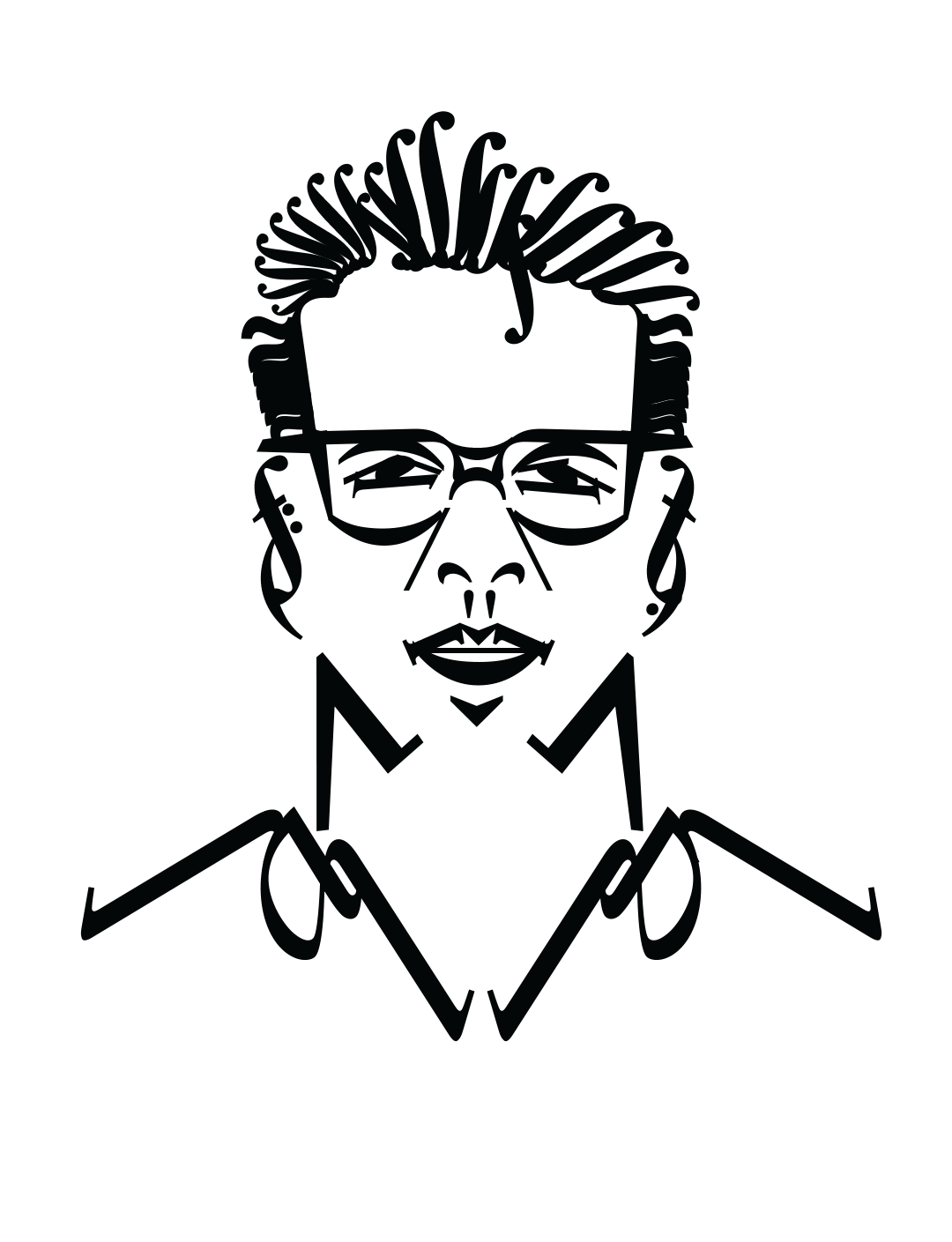Andy Clarke--- 30 September 2017
By Lorenzo Princi
What you do?
What do I do? I actually try-- I’m still trying to figure that out which is a weird one because I am Head of Design at Ansarada and obviously as a-- you know we’re a big company making of lots of stuff. So, there’s a small product design team and there’s obviously the marketing team who are doing different stuff and my job really is to make sure that everything we do has that kind of consistent feel, so when we’re putting out a piece of marketing material it reflects the company values and you know, the new brand that we’re developing-- that kind of stuff.
So, it’s an interesting one, because we’re doing, we’re basically starting again with a bunch of new products, sort of with a different focus and there’s a hell of a lot of effort on the product side, there’s a hell of a lot of effort on the marketing side. We’ve done a big new re-branding, there’s a ad agency in San Francisco, Godfrey Dadich (Partners), that we’re working with. But it actually has been really interesting because I didn’t actually intend to do this job full-time. You know I came out here for a six month contract and then decided that-- I decided that I wanted to stay, they decided they wanted me to stay, so I’m actually trying to figure out what my role is right now. You know, whether or not it’s more of a-- kind of a-- I don’t know what you’d call it really but a-- kind of a design leader but in terms of like, you know, influencing people and inspiring them and all of that kind of stuff or whether it’s more practical, along the-- on the product side or whatever. So I’m still trying to figure that out.
You know, we’re doing this big re-branding at the moment and there is a lot of creative that’s coming in from the ad agency which, you know-- is that the marketing team's responsibility or is it my responsibility? To be making sure that everything kind of fits with the ethos, that kind of staff, so, yeah, it’s an interesting one. I think there’s a-- I think in general, you’ve got to wrap it up as a creative director role.
"People think of sales as being this evil thing where you’re trying to convince somebody to buy something they don’t want but actually it’s just psychology and designers can learn as much about that as anybody else."
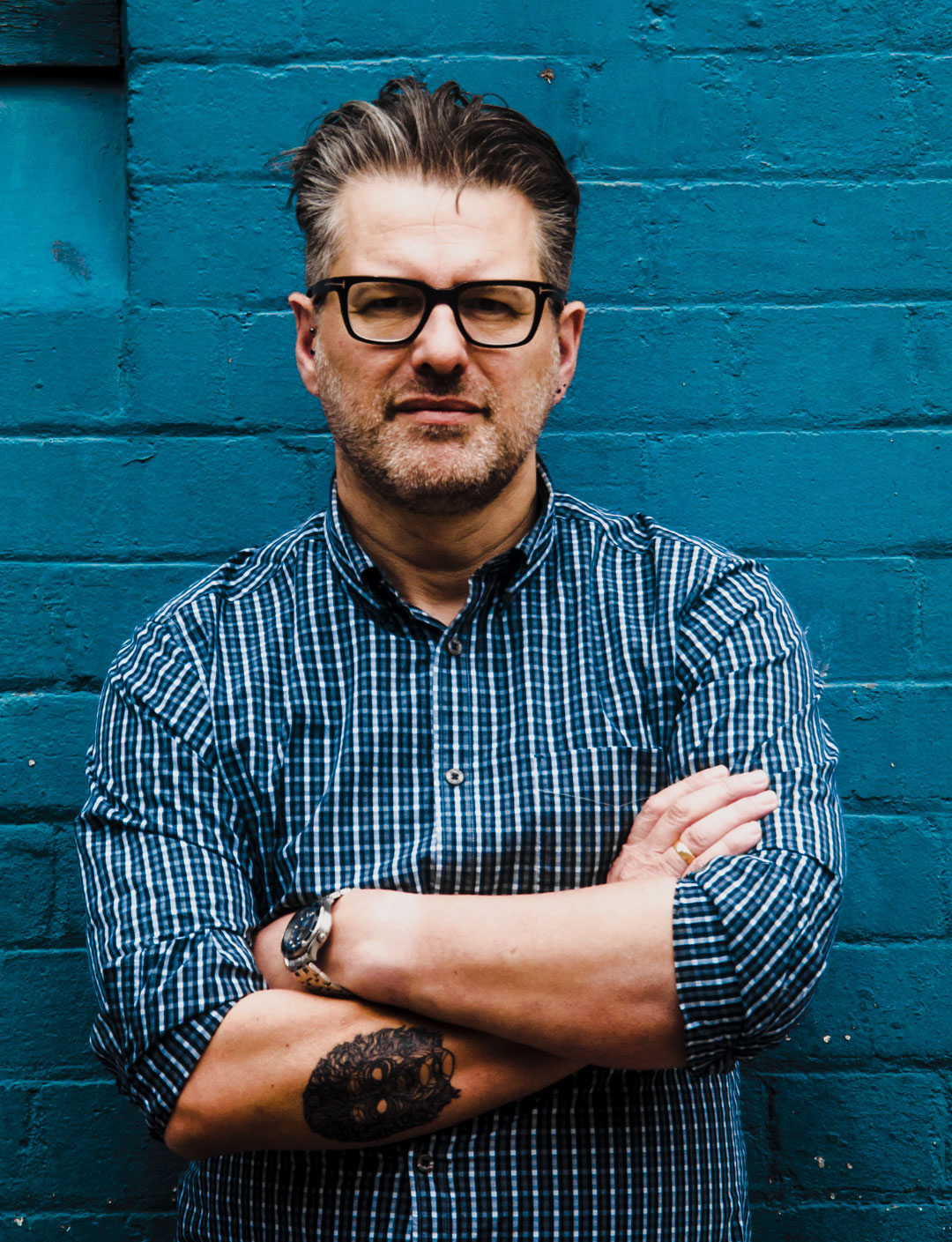
Your early work was in sales, how did you get into that, how did you find it?
[Laughs] that was fun! That was a lot of fun. So I was-- I left school and I went to art school thinking, I was going to be a brilliant painter and I’d been there-- because you know what it’s like when you’re in school and there was always like two of three kids in school that were like the ‘arty’ ones and you know I think there was like three of us, I can even remember her, Katherine Holman, don’t know what happened to her and so we were always the best at art, so of course your future is mapped out and you go to art school and I did a year’s foundation course and then I went to do a degree and it was one of those unstructured courses where basically, you arrive at the beginning and they say, “hello” and then they come back three years later with, “so what did you make?” And unless you actually wanted it there was no tutorials, no one-to-ones, no nothing. The only thing you had to do that was formal was an eighty thousand word dissertation in art history or whatever but I did mine on Batman.
So that was that and I realised very quickly that I was a terrible painter, so I spent a lot of time working in printmaking and photography, did a lot of you know, linocut work-- I love the process of photography and printmaking. So then when I left I thought, “well you know I’d quite like to go into photography” so I went and assisted in a bunch of photo studios down in London for a little while and ended up working in this big rental studio and while I was there I had to help out this kind of exhibition, big kind of photographic exhibition, equipment-wise and met my mate David, he was a sales guy for this camera and lighting company and he was like, “we need somebody that’s kind of on the more creative side because you know we need somebody who can talk to photographers and you know, relate to them and not just be a sales guy” but obviously it was a sales role. So I did that for like six years or so and god it was hell most of the time! You know, my job was literally walking around London knocking on photographic studio doors going, “hi!” And you know, over time you build up relationships with photographers.
So that’s-- I did that and it was tough but you learn rejection and you learn how to sell and after that I spent a few more years on the sales side in digital photography. Actually sold and installed the first digital camera in the UK which was kind of my claim to fame. That and sitting on a train with Arthur Scargill. So that was that and it was interesting and I’d alway knew that I wanted to get back into creative at some point. I had to wait for the opportunity but it teaches you a lot! You know, it teaches you about kind of presenting things, you know, about presenting ideas and selling things to clients and that’s one of the interesting things about what I’m doing right now is-- I’m used to, as a consultant, used to get hired. When I had my own business, you get hired by a company, they bring you in as the expert and they think, “oh because we’re paying an expert for advice, therefore we need to take it.” Whereas when you work in a company, particularly when you work in a company that uses outside consultants, all of a sudden you find that you not the guy! [Laughs] and also you have to sort of bring people along for the ride whereas I’m used to going away, thinking about something, making an idea and then going back and through you know, persuasion, you know, convincing somebody that’s the right way to do it and sales really helped with that.
We just did this big-- I mentioned that we went to Vietnam a couple of weeks ago (over coffee before the recording) and that was really-- the whole week was to teach the sales people how to sell these new products because in financial services they don’t really sell like we used to sell cameras and they don’t actually close a deal so there was a lot of kind of role playing and sales technique that was being taught to these sales guys and it was really fun and really fascinating to see that again. You know, just knowing how to actually ask for the order. You know, you do a pitch and you don’t get to the end and ask, “so what do you think?” It’s, do this thing and the guy nods and the next thing is, “right, well our next step is to come in and do a scoping session with you, we can do that within the next two weeks, would Tuesday or Thursday be best?” Right? And it’s just that stuff-- even-- people think of sales as being this evil thing where you’re trying to convince somebody to buy something they don’t want but actually it’s just psychology and designers can learn as much about that as anybody else.
You talk about not being a traditionally trained graphic designer, how did your design career begin?
Well, I was selling cameras and I was actually doing digital photography, setting up digital studios and I met a guy that ran a small ad agency doing below the line stuff and I’d been waiting to get back on the creative side and away from sales for a while and he basically said, "you know, why don't you come in and actually-- I'm buying all this kit, why don't you come in and run the studio?" So, that was great you know, I spent a couple of years really just getting back into creative work and when we then-- I left there after, I don't know, eighteen months or something and we moved to a fairly remote part of the UK and then I didn't really have any plans and a few people started to say, "do you know anything about this internet thing?" And it's like, "yeah!" Typical salesman, "yes, of course" and then you know, you figure it out and that was that so I basically learnt on the job, you know, I've got an arts degree-- a fine art degree but I had no formal graphic training, I couldn't have told you who, you know, Neville Brody was, you know, back then... but you know I suppose that's one of the thing art school teaches you, is to be adaptable and if you can just kind of like, I don't know, move with the punches…
"The thing art school teaches you, is to be adaptable."
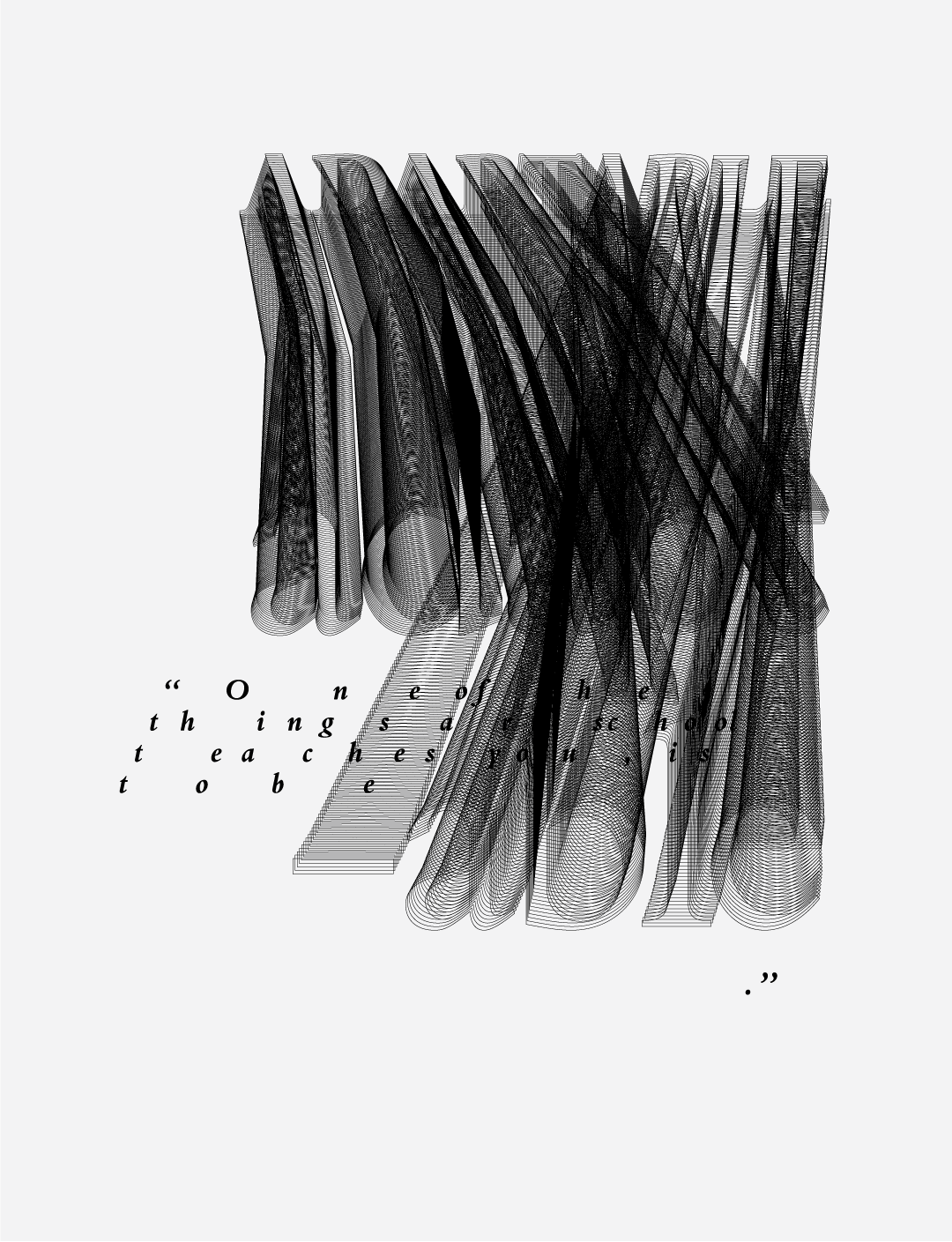
What made you found Stuff & Nonsense. What were the challenges in the late 90s?
So I was working with-- we moved back up north and like I said there was-- a couple of people started to ask about this internet thing so we started to do a little bit of work and at the same time I got a call from an old Sales Director of mine, basically saying, you know, did I come and want to work with him. So I worked with him for about a year and I did the design stuff on the side and we got to a point after about a year where-- there was at the time, what was to us-- in like (nineteen) ninety-nine was like a big job, it was like "TEN THOUSAND POUNDS!" [Laughs] or something you know, like it was a big job and we had to make the decision about whether or not we could do it and actually Sue, my wife, she convinced me that actually, if we-- if I stopped doing the day job and you know concentrated on the Stuff and Nonsense side of things then we could make it work, so... we did!
And yeah, so we just-- literally-- and I think a lot of it was to do with sales. Punched above our weight for like eighteen years or so. You know-- you build up a bit of a reputation which was good or bad and you know, up until a few years ago never really struggled for work, you know the stuff would just arrive. So, we didn't have a plan. We never wrote a business plan, we never had a strategy, we just knew that we didn't like, you know grow a big company or have lots of employees or do that kind of thing because I didn't want that kind of responsibility. So we kept it kind of intentionally small-- well that was our only plan really. Everything else was literally just, you know, quarter to quarter, month to month and somehow we had a decent lifestyle for you know, eighteen years.
You have released two well regarded and successful books on web design, Hardboiled Web Design and Transcending CSS: The Fine Art of Web Design, what were the motivations for writing them?
I didn’t ever want to write a book particularly but at the time, and this is like early 2000s. God! I sound like-- sounds like I’m the history channel or something [laughs] but at the time there was a, and I think it’s less so now but there was a real kind of blogging culture and you know people would-- the industry was really small and everybody sort of that was involved in, particularly kind of web standards stuff, accessibility and CSS (Cascading Style Sheets), everybody kind of knew each other or knew of each other and so I started up a blog basically, though I’d never really written much before and I just used to write about CSS and code and you know, you would write about things that you’d learnt and pretty soon I build up a reasonable kind of following on that side of things which led to-- it was called At Media in 2005 which was like the first web conference in Europe. And anyway, so Patrick, the guy who organised that invited a bunch of kind of heavy hitters, you know, (Jeffrey) Zeldman and Dan Cederholm and a few others, Joe Clark, people that people knew you know and then he invited a bunch of nobodies along, including me [laughs] and Jeremy Keith and Andy Budd and a bunch of other people who had never spoken before and I did a talk about Disney because I’d just done a project for Disney and that was that, people sort of-- people liked it!
And somebody that I knew at the time had a relationship with Peachpit New Riders which was the publisher and they were doing-- there was two publishers at the time that were doing a lot of kind of web books and yeah they-- I met with them in San Francisco and they said, “well write a book for us” which was like a year of bloody hell really, it was torment, I’d never done it before but people still talk about that book, you know I still get comments about it. So yeah, yet again it one of those sort of accidental things.
You talk about the internet as “a vibrant medium for creative expression.” How do you reconcile your art direction approach, where design and content come together, with utility driven product design frameworks and methodologies?
Yeah well this is-- I wouldn’t say it’s a struggle daily but there is a certain amount of tension involved in this kind of thing. I think that the mistake that people make who are on the product side-- the mistake they tend to make is thinking that a more kind of editorial or creative or art directed approach somehow detracts from utility. Now obviously there’s a certain amount of practicalities involved and certainly you wouldn’t ever want to break somebody’s kind of mental model but editorial design you know-- as you know from newspapers, magazines, etcetera, art direction is actually designed to amplify the content. It’s supposed to make people’s understanding of the content easier and that can go you know in product design as much as it can in you know editorial.
So really it’s just about looking at that terminal, looking at that piece of functionality, even if it’s something simple like a login screen and saying, “so how can I design this in such a way that it gives somebody an impression?” You know, you can have three things on a page, you know, it can say, “welcome to Ansarada, login to your account” and there’s a button and I bet that if you gave that to ninety-nine percent of kind of product designers they would do pretty much the same thing. You know, material design style approach or whatever but actually if you think about-- you know, you think about how that thing is branded and you think about the whole context of the journey, you know, you think about the fact that somebody may have actually received an email from a financial advisor saying, “join this platform,” they click on the link in the email, they go to the website, they come to the page where you’re asked to sign up and there is this kind of feeling that they get from that page and just the fact that visually it’s connected to the email, it’s connected to the web experience, that they see that this is a you know trustworthy and sophisticated product that’s had kind of attention to detail paid to it, you know it doesn’t look like a generic, out-of-the-box material design thing and that’s kind of where my interests is, in you know, how can you kind of style these experiences to be distinctive to the company or whatever.
So, the two approaches are not at odds at all. You know you would never want to break somebody’s mental model by not making the CTA (call to action) obvious or you know, copywriting is extremely important but you know, there’s still opportunities to be creative.
"Art direction is actually designed to amplify the content."
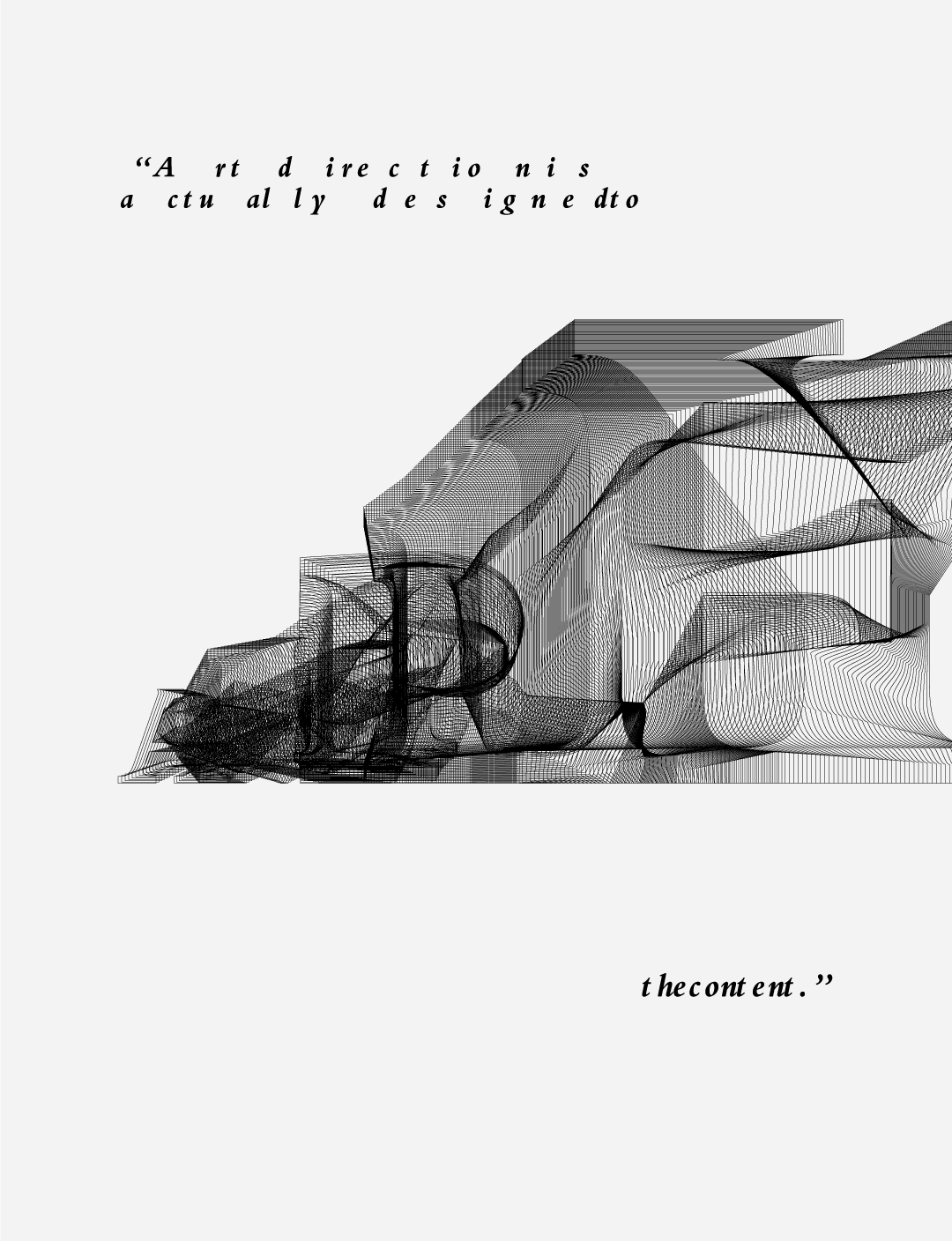
You stress the importance of knowing the technology (and maths) but it seems to be as not to be limited by it. Do you think we haven’t reconciled the right and left brain thinking when it comes to web design where as other industries have?
Yeah, to a certain extent, I mean there’s been this discussion for years about, “should designers learn to code?” And I’ve kind of gone back and forwards on that because I’ve always written code but I didn’t write code because I was interested in code, I wanted to make sure that I could kind of-- you know, I could do my own proof and I could know that something that I designed was going to be able to be built. So, I don’t think anymore that designers need to know how to code, there’s plenty of tools that can-- middleware that can get kind of into that but I do think that it’s important that designers understand what the limitations are and kind of what’s possible. You know if we think-- still think about design as being just that flat Sketch file then we’re not going to be thinking about you know, interaction or affordance or all that kind of stuff, so knowing code actually helps there but you know you can achieve the same thing by doing what we do at Ansarada which is to have kind of integrated product teams, you know, we don’t have to have separate front-end developers, everyone works in one kind of pod and that helps too.
"It’s important that designers understand what the limitations are and kind of what’s possible."

Design education is very different for digital natives? Do you think this is impacting web design?
I don’t know, you know I’ve done a fair amount of guest lecturing over the years, I had a relationship with Manchester Metropolitan University for a few years and I would go in there and talk about design stuff and it’s interesting, you know, you’ll have some courses where it’s purely about the visual side of things. You’ll have other courses like the one at Manchester Met which is, you know, they’ll uncover everything from PHP through to accessibility and everything else but they don’t major on design and I don’t know of anywhere really apart from what Jared Spool does, he has this center center school in Tennessee. I don’t know anywhere else where you can go to actually learn UX (User Experience) formally. There’s never been as far as I know, you know, any particular kind of web design or digital design qualifications and I wonder at times whether or not, you know, there needs to be to be honest. This thing moves so quickly that by the time that somebody’s sat and wrote a curriculum it would be out of date.
Lorenzo: Hence the emergence of the micro-courses such as those offered by General Assembly and Tractor School that can be more fluid.
Andy: Yeah, you know kind of peer-to-peer teaching, you know particularly in a lot of the small events like we have in Sydney. My friend Charlotte (Jackson), she runs this-- started this thing called codebar in Sydney now which is to teach total beginners how to do stuff and I know GA is popular here. So I think those kind of things have a lot more kind of merit but the most important thing is just to get people working on stuff.
You have given many talks, you are very good at it, how did you get into it, similar to books it very much opens one up, how have you found that experience.
Yeah, now I was very conscious of that for a long time and I think partly down to-- kind of emotional needs or self-confidence or whatever that that kind of stuff is important particularly when you work on your own which is what I did for a long time. You get a certain amount of validation from that and I think that for a long time I kind of-- I almost used that as a bit of an emotional crutch in a way. You know I used to like the attention or-- I used to like the-- I certainly enjoyed all the travel stuff, I was very lucky to be able to go to all these amazing places, including Sydney but I kind of lost interest in it a little bit. I think that for such a long time, over ten years that actually I find it difficult now to kind of get motivated to write about stuff and also the audience has changed massively and the way in which people absorb that kind of content. We talked about our books earlier, I did a rewrite of my Hardboiled book a couple of years ago and-- nobody writes big books anymore, you know A Book Apart, that’s about as long as-- and even they don’t publish as many full size books. We’re only talking eighty pages. They don’t publish as many of those as they used to and you know, a lot of the stuff that they’re doing now is much more kind of pamphlet size [laughs] you know, so, the whole market for putting that kind of stuff out has changed enormously.
Lorenzo: We’ve almost trained people to absorb less and less with the way we present copy in the hopes to get more clicks or pageviews...
Andy: Yeah and there are now, some incredible resources for you know, if you want to find out about CSS Grid or you want to go and find out about the new UX principle or something then you’re only a Google search away from CSS Tricks or somewhere like that and to be honest, there are a lot of younger, smarter people who are doing that thing much better that I would do and also, I’m sort of-- they way in which we design things and build things now is very different. I mean things are much more technical, so you know, you can’t even start off a simple code tutorial without it say, “well, install this thing here” or whatever [laughs]. Well, you know I think my stuff was kind of, of its time and hopefully it made a positive impact but I’m not necessarily-- it’s incredibly difficult and there are people who still do this, it’s incredibly difficult to force or to try and stay relevant. You’re either relevant or you’re not relevant and you can’t keep on the hamster wheel.
Lorenzo: I guess you’ve moved into the why space instead of the how?
Andy: Yeah, I think so. I mean when I look back on it-- I sound like I should be on the history channel but when I look back on it, the thing that I’m always trying to get people to do is to question the status quo and it was, “yes, you can use CSS now” you know “browser support is actually not that important” you know, you’ve got to be looking to the future. You know at the early days, or more recently about, “no, websites don’t all need to use material design or be a bootstrap clone or a SquareSpace theme” or whatever. I dared people to question how they do stuff, that’s been the consistent theme. I think it’s been a certain amount of authority mocking or rebelliousness but I just find it incredibly disappointing and dull frankly when you know people think of these-- the stuff that we do as “oh well we’ve learnt that pattern, you know, let’s utilise that.” Sort of sticking jigsaw pieces together and you see this a lot because things change so quickly, the minute that people find a pattern that works or something, be it a cut and paste code sample or a UX pattern or whatever then all of a sudden that becomes the norm and I want to encourage people to always be thinking, “maybe there’s something better?”
"The thing that I’m always trying to get people to do is to question the status quo"
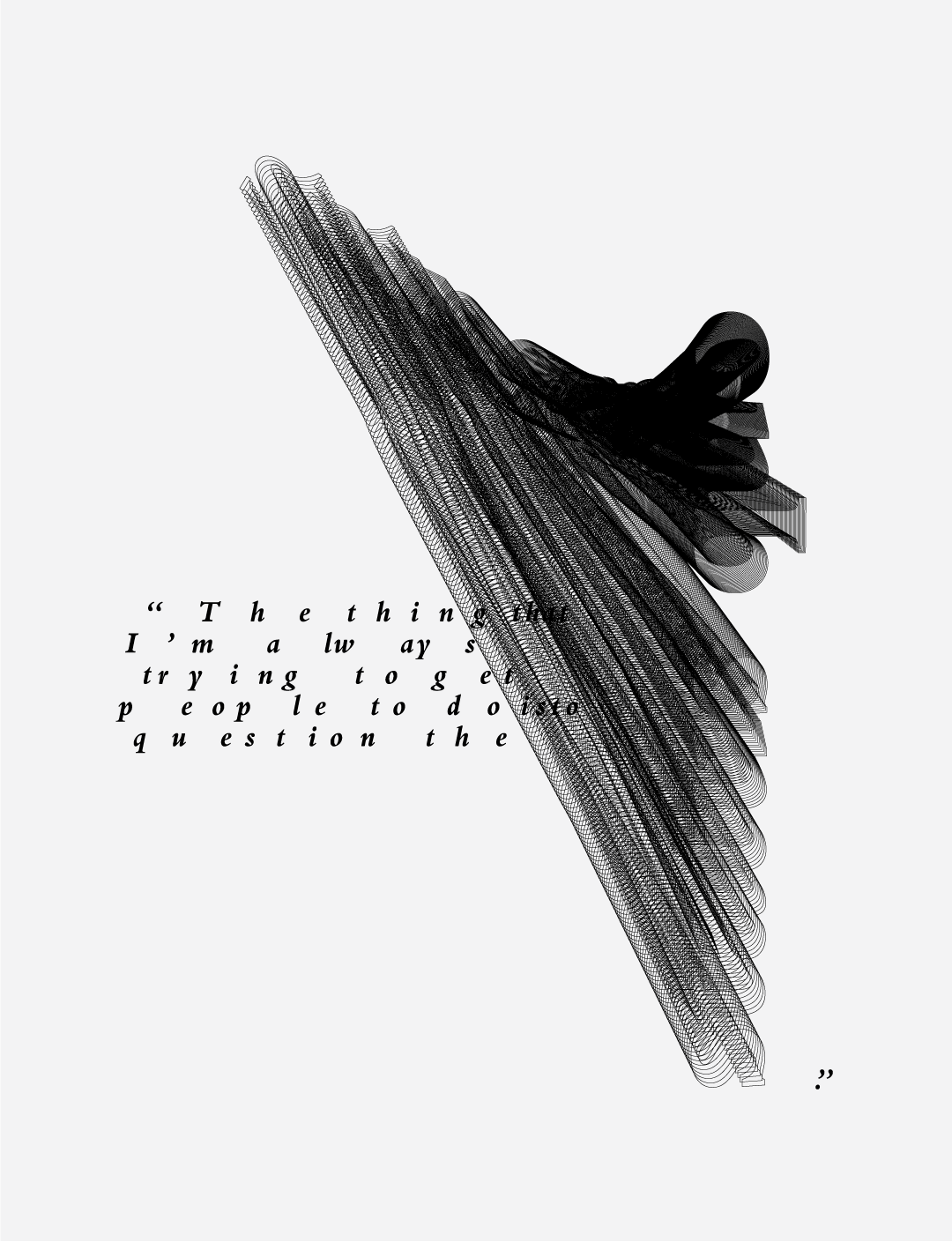
Design has led you all over the world, have you found travel has shaped or influenced you design mentality?
It’s been hugely enjoyable, I wouldn’t have known back in 2005 or whenever it was, 2004 or something that I would’ve been to all of these places. So it does open your eyes to things and you know, you get to meet people, make connections and all that kind of stuff. You know, if I hadn’t had done that stuff back in the early days, I wouldn’t have met John Allsopp and John Allsopp wouldn’t have invited me to speak at Web Directions last year and you know I wouldn’t have had two weeks to kill and looking for consulting work and meeting my friend Ben Buchanan again who I met at Web Directions in 2006 out here and then you know, he wouldn’t have invited me to meet his CEO and I wouldn’t have this job now. So I’m a great believer in kind of-- things happening for a reason.
Lorenzo: Saying ‘yes’ and letting things happen?
Andy: Yeah, exactly, so travel is really important. I think it’s going to get a lot more difficult for people frankly. I used to believe that, you know, with the web and everything else, that the world was kind of opening up, borders were coming down and all of that kind of stuff. Sadly it doesn’t appear to be going in that direction… and I was very lucky, I got my 457 (Australian Working VISA) literally just before the changes, so just a matter of a couple of months can make a huge difference.
"I used to believe that, you know, with the web and everything else, that the world was kind of opening up, borders were coming down and all of that kind of stuff. Sadly it doesn’t appear to be going in that direction…"

I usually ask what’s next but you’re just starting your “what’s next here in Australia”, what drove the change and move to Australia?
Yeah! I mean it was a combination of things really. I mean in a purely kind of personal level I’ve wanted to live in Australia for years. We’ve been coming here pretty much every year for the last ten years or so and I hate European winters, Northern European winters-- sure it’s great in the south of Italy. So we’ve been coming out here kind of you know January, February for years and I’ve always wanted to live here, you know since we started coming it feels like-- you know I live climate, I like the people and everything else but it never really seemed possible because you know, you’ve got a business, you’ve got the kid at school and all that kind of stuff… so you know I came out here on a six month contract and thought to myself, “yeah, actually this is possible” you know it is possible to live here and still keep a house in the UK which I’ve no intention of selling. It is possible to keep some of my other kind of interests going while working full-time. So, from a purely personal point of view, you know, it works! From a business point of view I actually think that after eighteen years of running your own small business which is insanely-- people always go, “it’s a lifestyle business” yeah, it’s a lifestyle business if you just want to work seven days a week! You know, you’ve got to find the work and do the work and keep people happy with the work and then chase them for paying for the work, you know and meanwhile you’ve got to be finding the next bit of work and that over the years became you know, very stressful. It was fine when work was just falling in the door but you know when it stops doing that as regularly it can be very stressful so again, actually have a, you know-- having a good role here; challenging and busy or whatever that it is, I’m not stressed. You know I feel a lot better on that and also from a company point of view you know, I picked the right place I think. You know there is this challenge to do more creative work in a product space, you know in an area where people wouldn’t expect you to do you know, art direction or take a more kind of creative approach to type or layout and yet the company wants to do that so it seems like a good fit all round.
